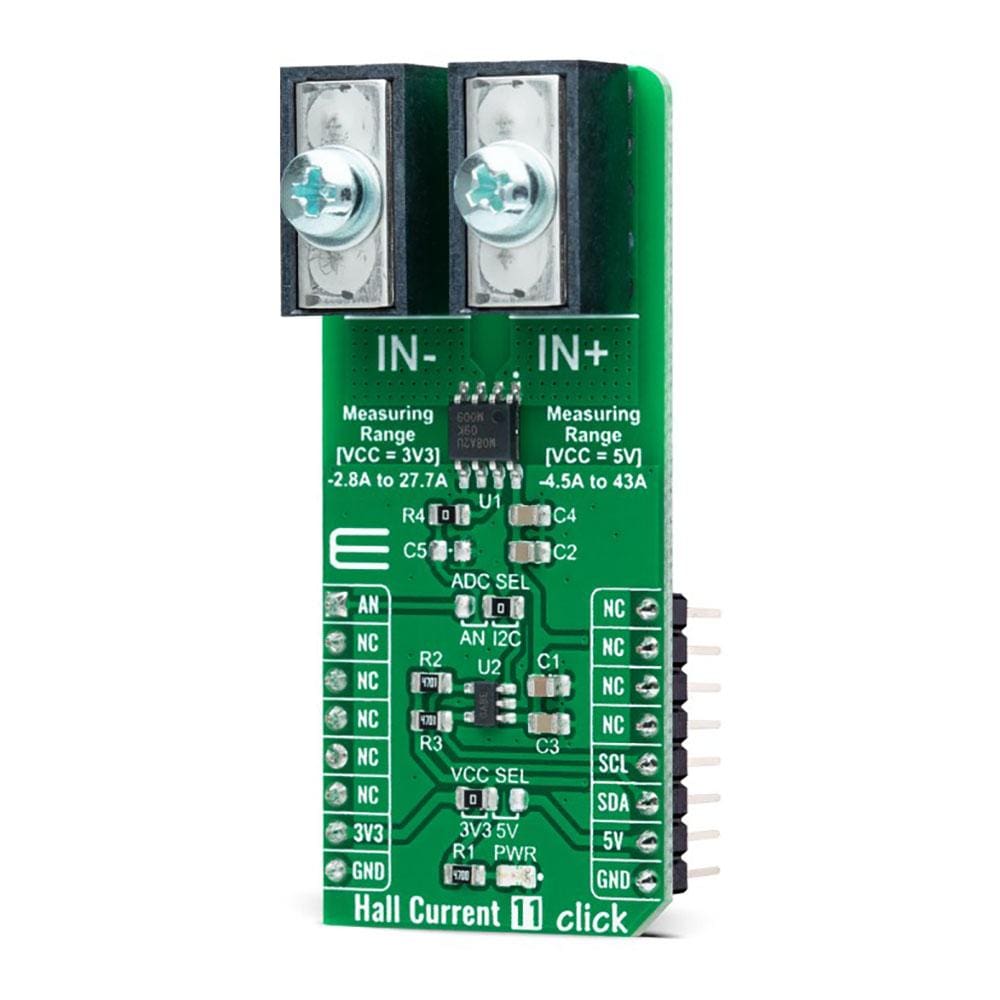
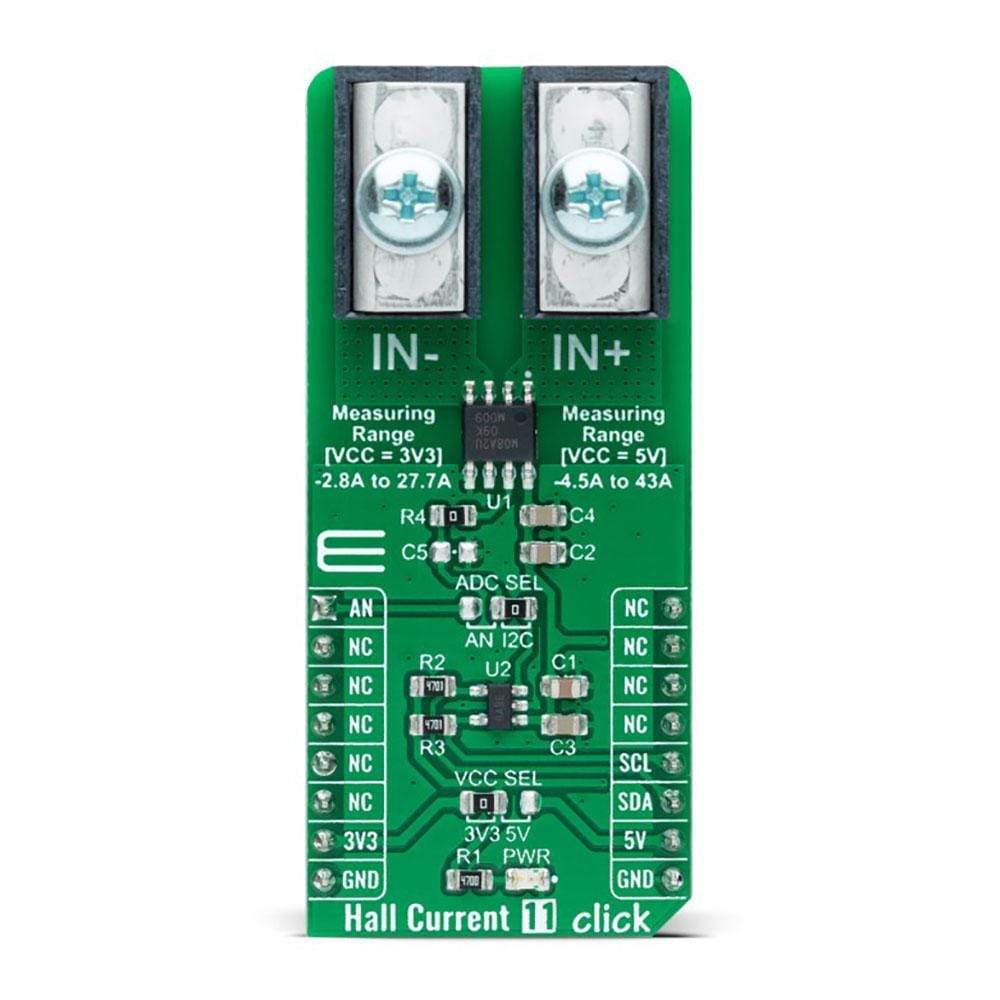
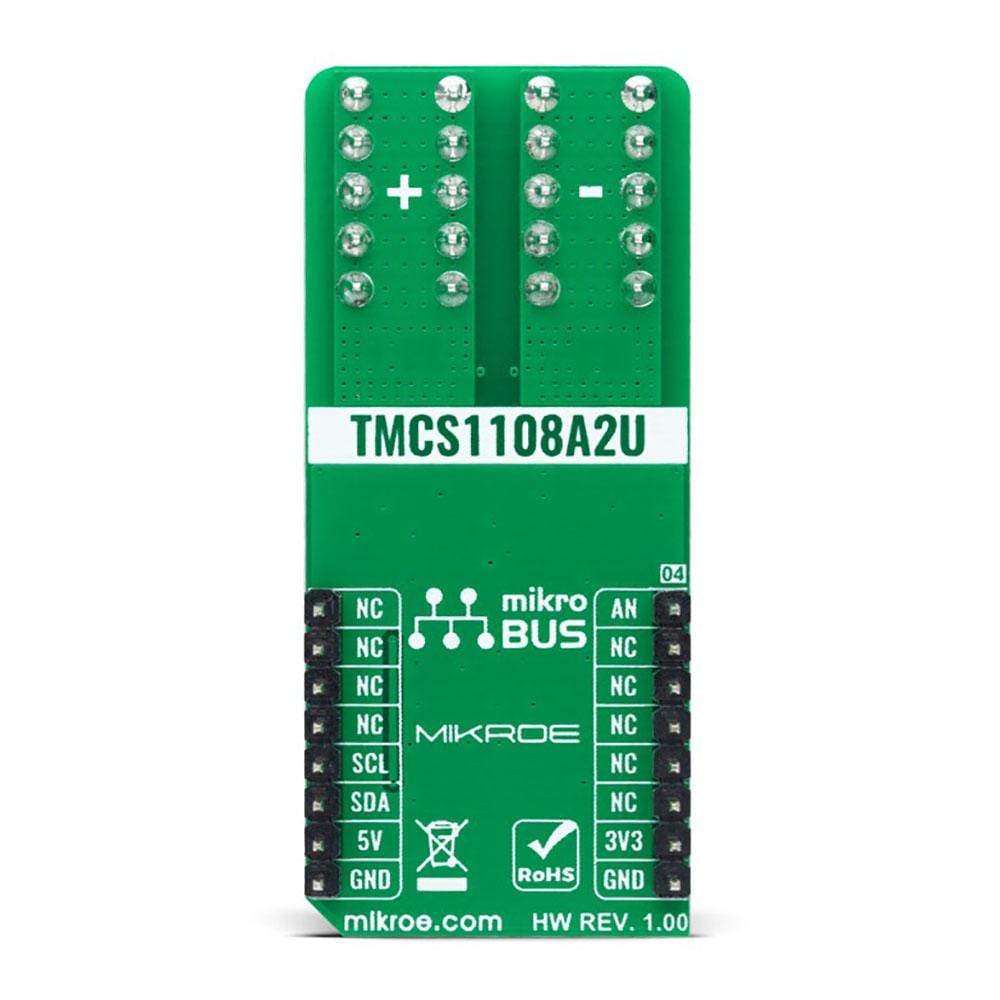
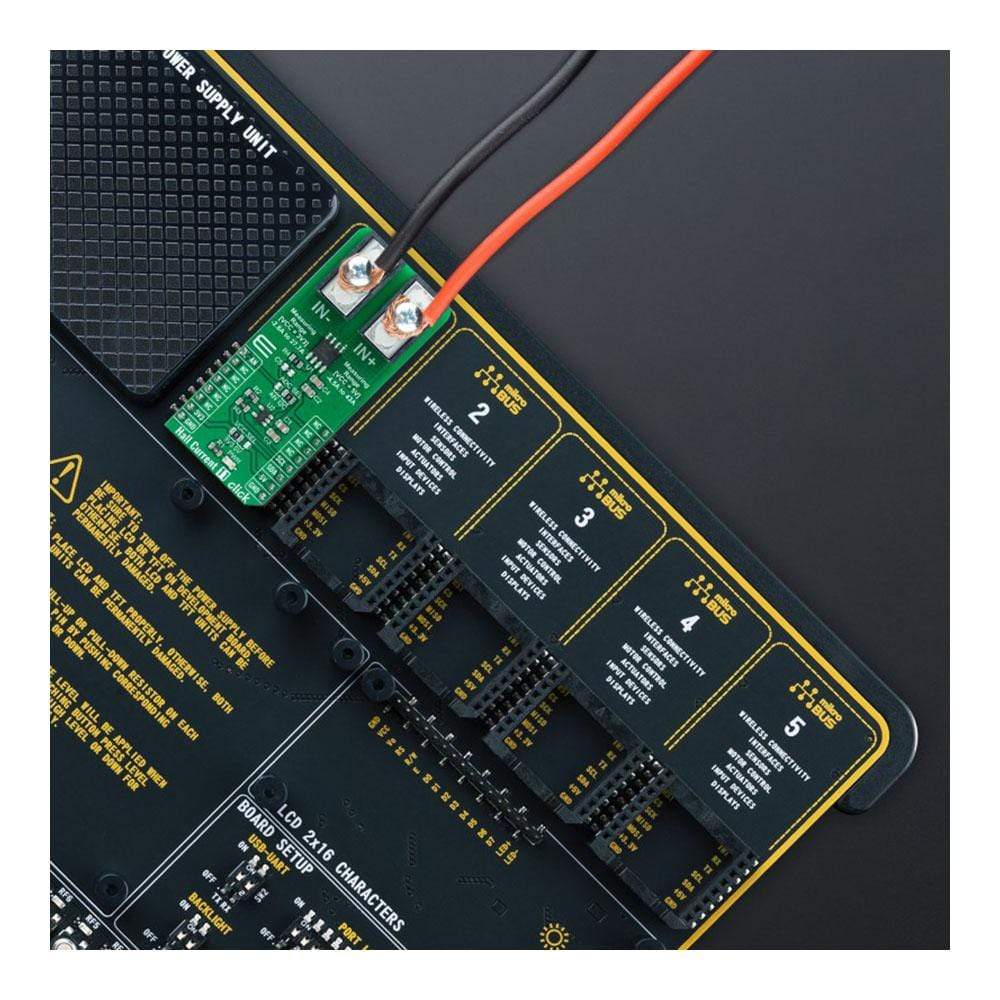
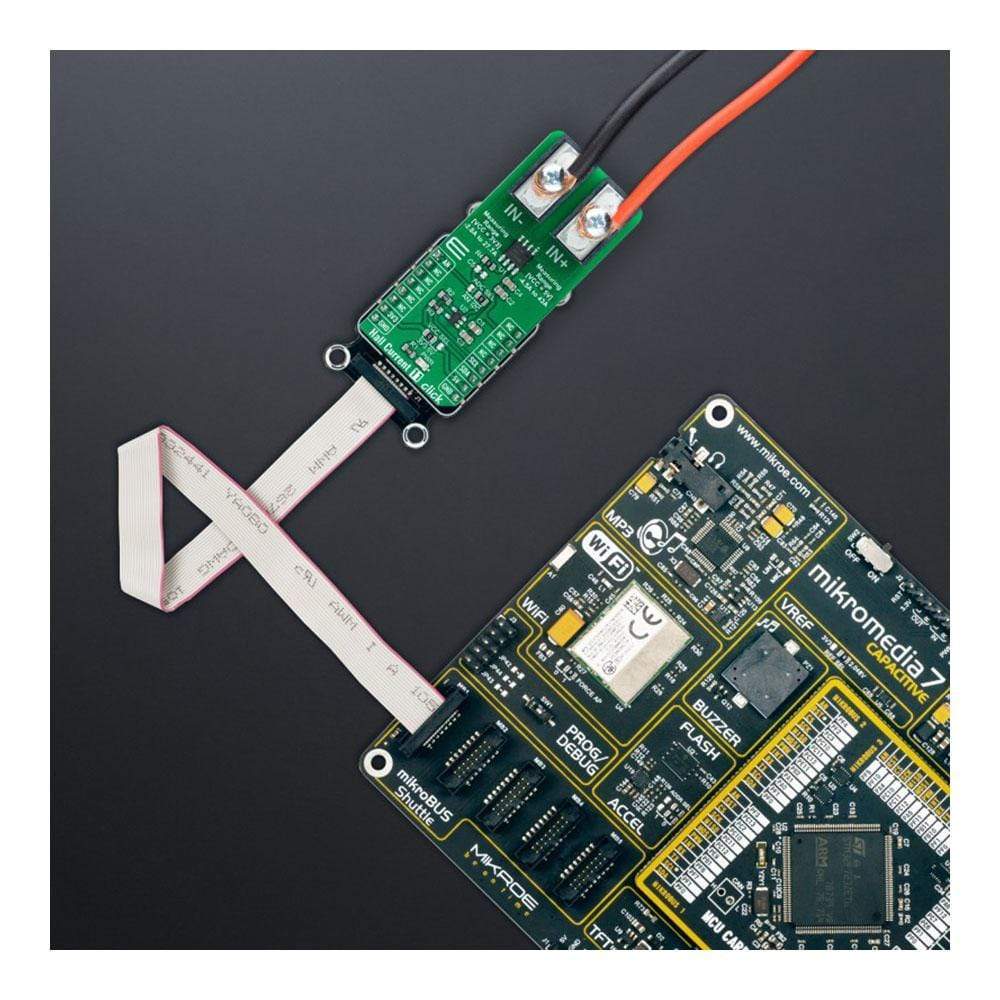
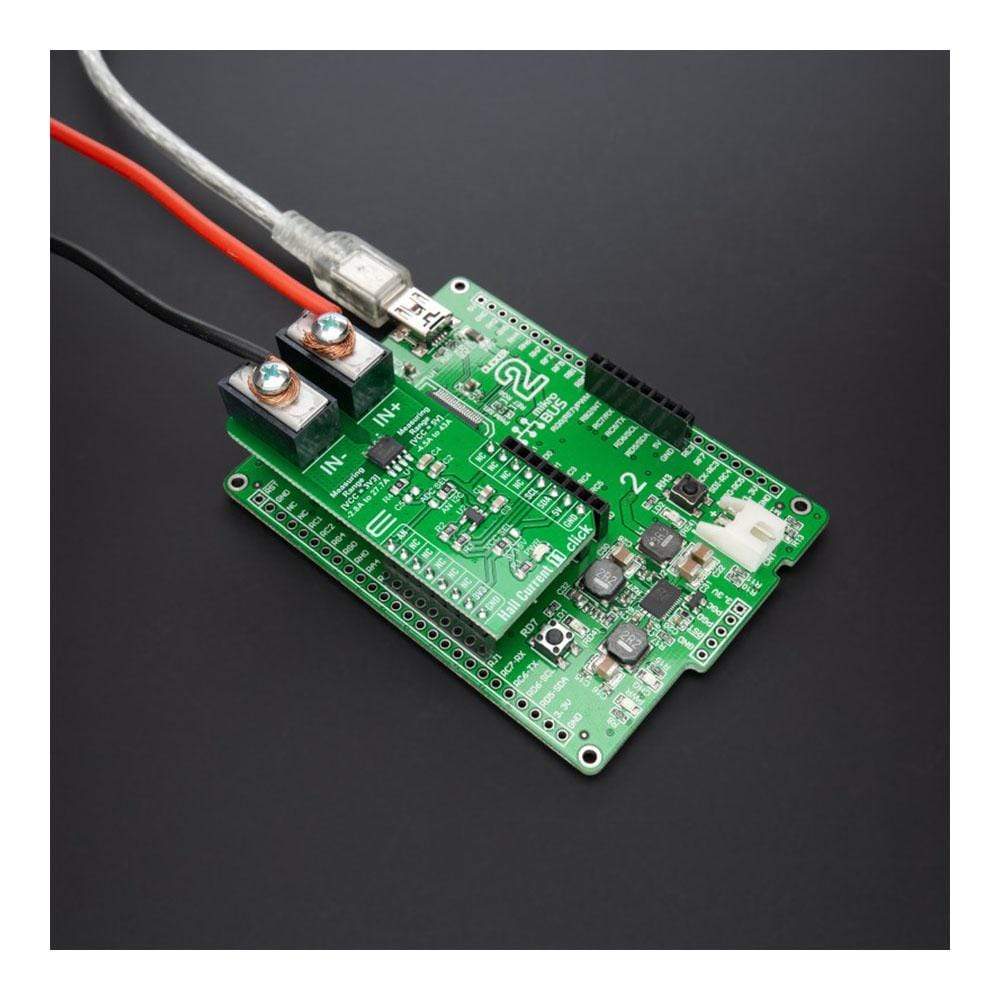
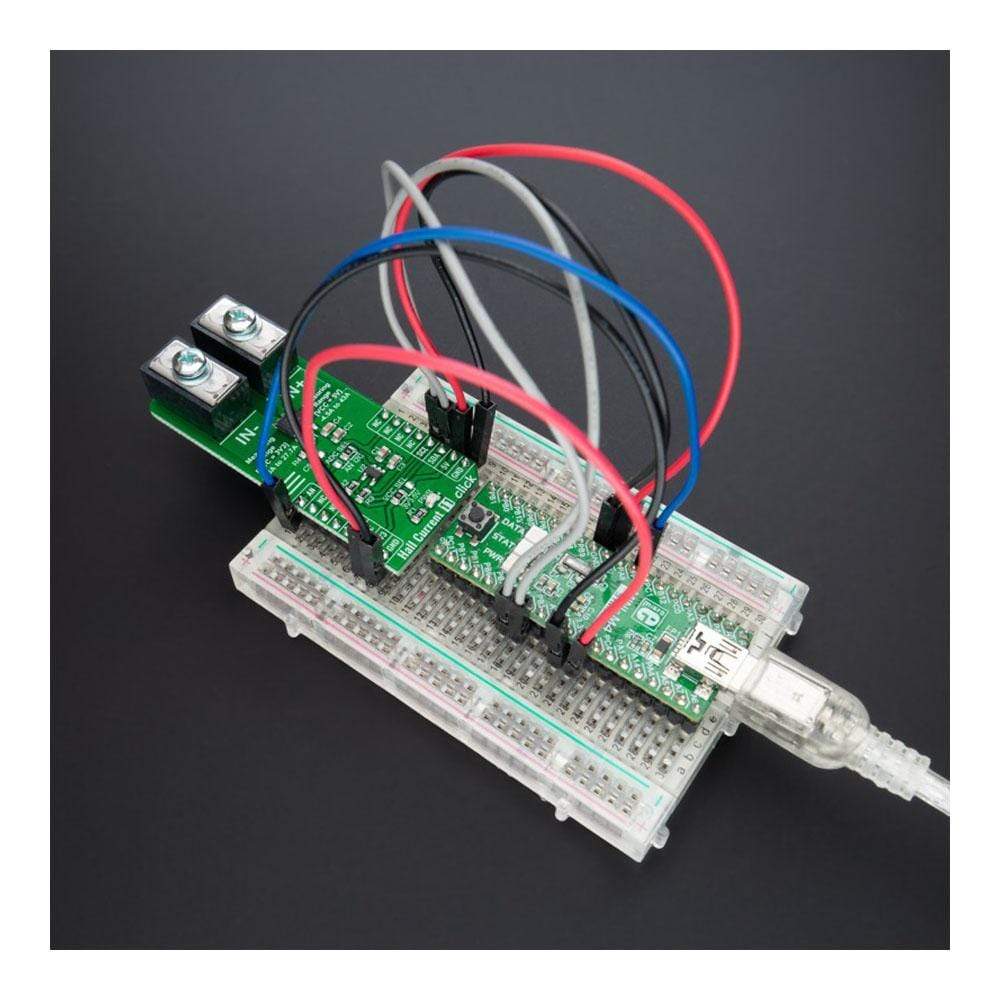
Overview
The Hall Current 11 Click Board™ is a compact add-on board that provides economical and precise AC or DC current sensing solutions. This board features the TMCS1108A2U, a galvanically isolated Hall-effect current sensor with high accuracy, excellent linearity, and temperature stability from Texas Instruments. The input current flows through an internal 1.8mΩ conductor that generates a magnetic field measured by an integrated Hall-effect sensor. It features a 100V functional isolation working voltage with both unidirectional and bidirectional current sensing. Based on the selected logic voltage VCC, the TMCS1108A2U allows the user to measure current in two appropriate ranges, where after that, can process the output signal in analogue or digital form. This Click Board™ is suitable for AC or DC current-sensing in industrial, commercial, and communications systems.
The Hall Current 11 Click Board™ is supported by a mikroSDK compliant library, which includes functions that simplify software development. This Click Board™ comes as a fully tested product, ready to be used on a system equipped with the mikroBUS™ socket.
Downloads
Der Hall Current 11 Click Board™ ist eine kompakte Zusatzplatine, die kostengünstige und präzise Lösungen zur AC- oder DC-Stromerfassung bietet. Diese Platine verfügt über den TMCS1108A2U, einen galvanisch isolierten Hall-Effekt-Stromsensor mit hoher Genauigkeit, ausgezeichneter Linearität und Temperaturstabilität von Texas Instruments. Der Eingangsstrom fließt durch einen internen 1,8-mΩ-Leiter, der ein Magnetfeld erzeugt, das von einem integrierten Hall-Effekt-Sensor gemessen wird. Es verfügt über eine 100-V-Funktionsisolierungsbetriebsspannung mit sowohl unidirektionaler als auch bidirektionaler Stromerfassung. Basierend auf der ausgewählten Logikspannung VCC ermöglicht der TMCS1108A2U dem Benutzer, Strom in zwei geeigneten Bereichen zu messen und anschließend das Ausgangssignal in analoger oder digitaler Form zu verarbeiten. Dieses Click Board™ ist für die AC- oder DC-Stromerfassung in industriellen, kommerziellen und Kommunikationssystemen geeignet.
Das Hall Current 11 Click Board™ wird durch eine mikroSDK-kompatible Bibliothek unterstützt, die Funktionen enthält, die die Softwareentwicklung vereinfachen. Dieses Click Board™ wird als vollständig getestetes Produkt geliefert und ist bereit für den Einsatz auf einem System, das mit der mikroBUS™-Buchse ausgestattet ist.
| General Information | |
|---|---|
Part Number (SKU) |
MIKROE-4797
|
Manufacturer |
|
| Physical and Mechanical | |
Weight |
0.02 kg
|
| Other | |
Country of Origin |
|
HS Code Customs Tariff code
|
|
EAN |
8606027383717
|
Warranty |
|
Frequently Asked Questions
Have a Question?
Be the first to ask a question about this.







